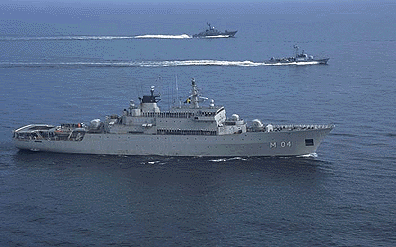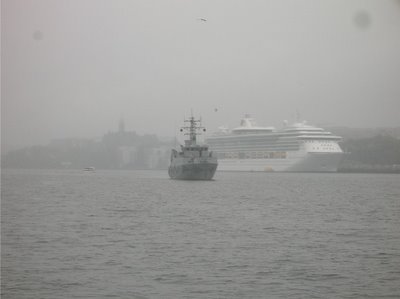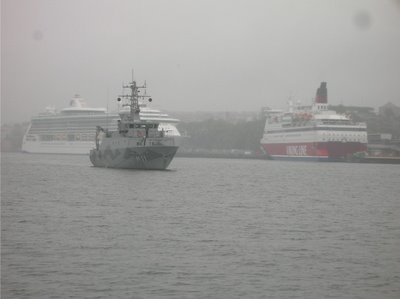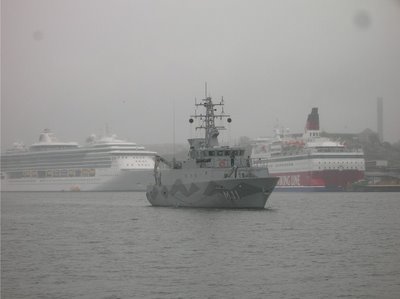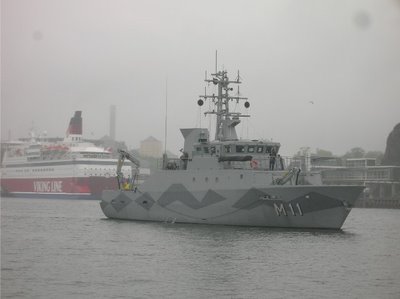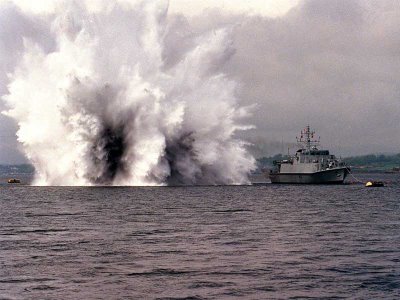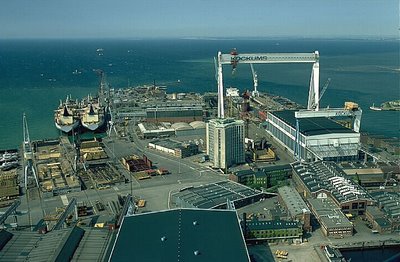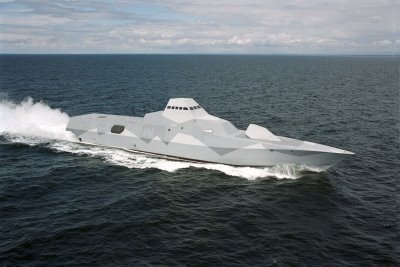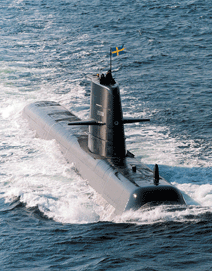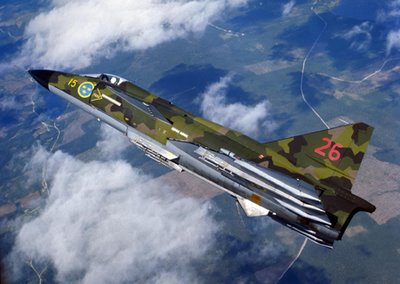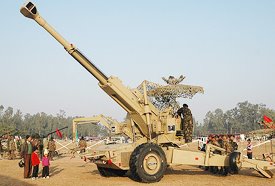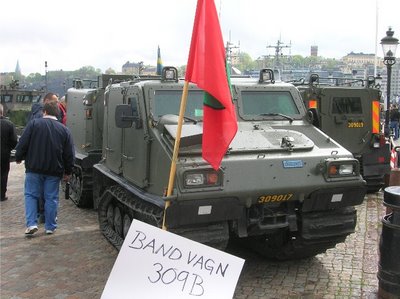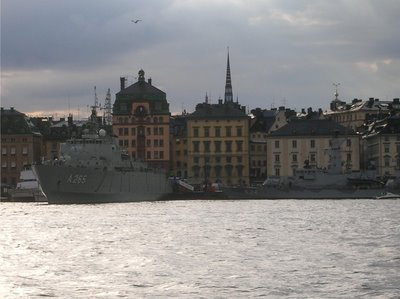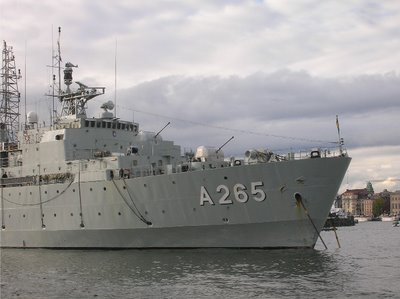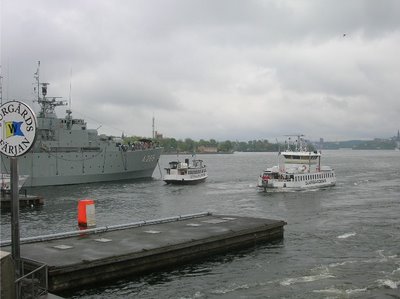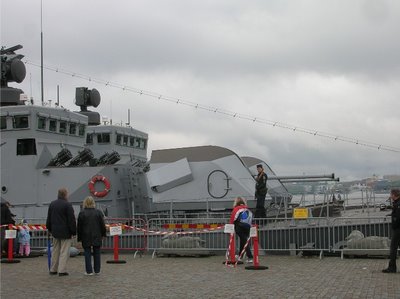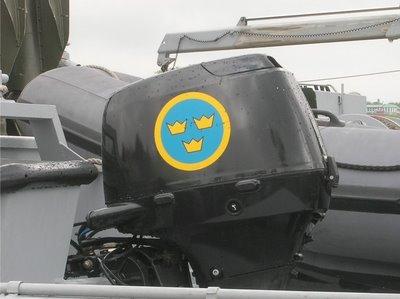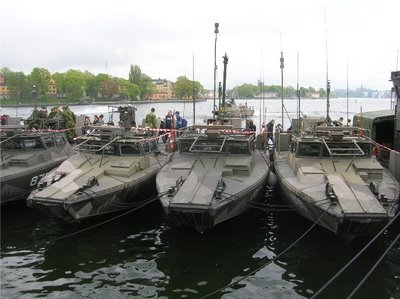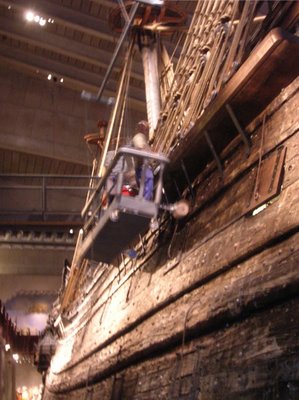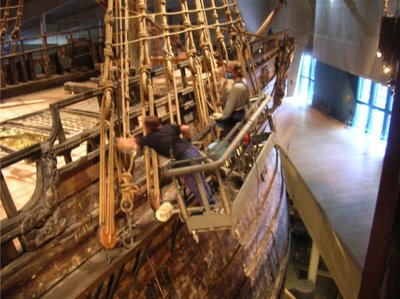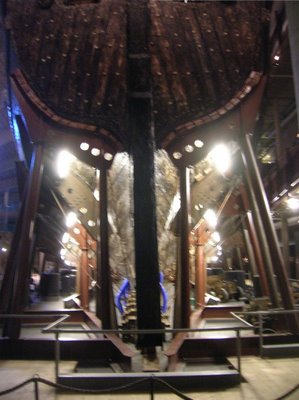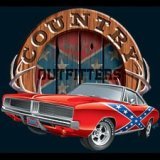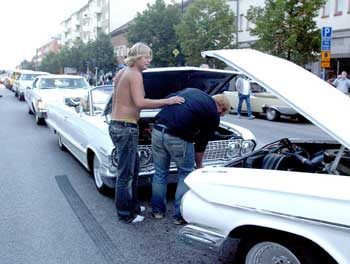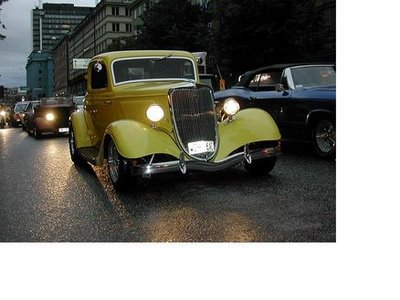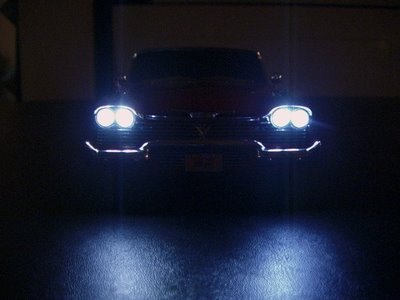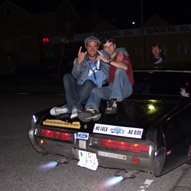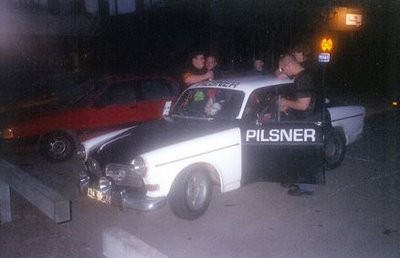Stena Steams in...
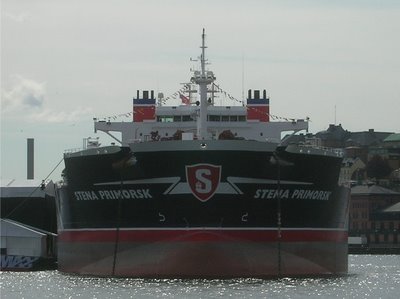 There's a new guest in the harbor!
There's a new guest in the harbor! ...the Stena Primorsk of Göteborg.
...the Stena Primorsk of Göteborg.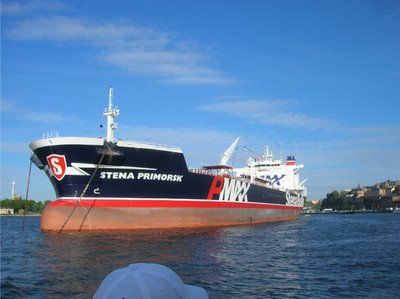 She's a brand-spankin' new oil tanker built by the Brodo-Split Shipyard in Split, Croatia. Her Swedish owners, the Concordia-Stena Shipping Line is so proud of her they just have to bring her to Stockholm and show her off.
She's a brand-spankin' new oil tanker built by the Brodo-Split Shipyard in Split, Croatia. Her Swedish owners, the Concordia-Stena Shipping Line is so proud of her they just have to bring her to Stockholm and show her off.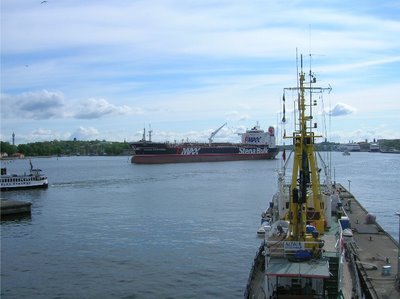 She's been anchored right out in the center of the harbor where everyone can see it, right in front of Gamla Stan. For those of you that don't know the harbor, this is like putting her in Central Park in New York. She's so huge (rivalling the cruise ships starting to arrive in ever-greater numbers as the tourist season sets in) that she dominates the entire city skyline and just about blocks the main shipping channel. The ferries going to the outer islands off Stockholm have to weave around her.
She's been anchored right out in the center of the harbor where everyone can see it, right in front of Gamla Stan. For those of you that don't know the harbor, this is like putting her in Central Park in New York. She's so huge (rivalling the cruise ships starting to arrive in ever-greater numbers as the tourist season sets in) that she dominates the entire city skyline and just about blocks the main shipping channel. The ferries going to the outer islands off Stockholm have to weave around her.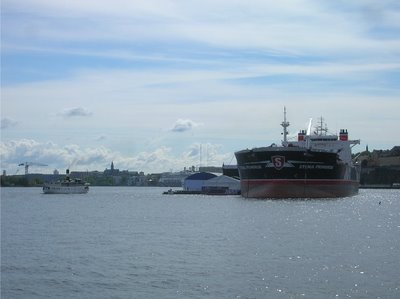 Just for a sense of size, note how she compares to the little historic passenger steamer going by on the left. That steamer is over 150 feet long and has three decks above the waterline, yet she's totally dwarfed by the Stena Primorsk. This is why there are so few ships in ports today compared to a century ago. Look at the change in size, in the amount of cargo just one ship can handle. No wonder ports are becoming ghost towns!
Just for a sense of size, note how she compares to the little historic passenger steamer going by on the left. That steamer is over 150 feet long and has three decks above the waterline, yet she's totally dwarfed by the Stena Primorsk. This is why there are so few ships in ports today compared to a century ago. Look at the change in size, in the amount of cargo just one ship can handle. No wonder ports are becoming ghost towns!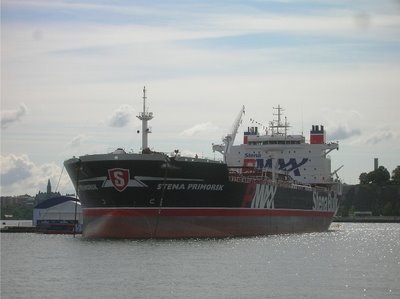 Her arrival here will be marked by a big rock concert celebration after the Queen personally comes down to the harbor to smack the new ship with a bottle of booze. It is going to be a sort of 'second-christening' for her. I mean, she's already been launched (1st christening), put through her sea-trials, and then steamed from the Adriatic to the Baltic. So this'll be sort of a fake christening...although, it has a real queen doing the dirty work, so I guess it counts.
Her arrival here will be marked by a big rock concert celebration after the Queen personally comes down to the harbor to smack the new ship with a bottle of booze. It is going to be a sort of 'second-christening' for her. I mean, she's already been launched (1st christening), put through her sea-trials, and then steamed from the Adriatic to the Baltic. So this'll be sort of a fake christening...although, it has a real queen doing the dirty work, so I guess it counts. 
Queen there or not, the Concordia-Stena Shipping Line that commissioned the ship has reason to pretty outlandishly proud. Stena Primorsk is a shining example (and I don't just mean her beautiful blue paintjob) of cutting edge modern tanker design, complete with all the necessary safety bells and whistles now requireed by the International Maritime Organization (IMO).
First, she has the now-mandatory double-hull design as you can see in their promotional graphic above. The double-hull design became an international requirement after the hard lessons of the single-hulled Exxon Valdez when she tore herself open on a rocky reef in Prince William Sound, Alaska in 1989.
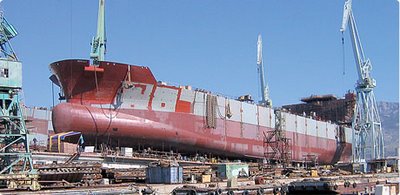 She was also built with the redundant safety systems of two engines, twin screws, and twin rudders so becoming disabled and drifting into danger is far less likely. Then for fire she has all the latest haylon fire supression systems and nozzles all over the decks and catwalks. This is her under contruction in the Brodo-Split Shipyard in Split, Croatia last year.
She was also built with the redundant safety systems of two engines, twin screws, and twin rudders so becoming disabled and drifting into danger is far less likely. Then for fire she has all the latest haylon fire supression systems and nozzles all over the decks and catwalks. This is her under contruction in the Brodo-Split Shipyard in Split, Croatia last year.  However, her owners' greatest joy is undoubtedly that given her size of 182 meters long and weighing in at over 36,000 tons empty (fairly small as tankers go, but big for ships inside the shallow sill at the entrance to the Baltic), she has tankage space for 65,500 tons of petroleum--yeah, nearly double her own weight. With medium-grade bunker oil (a bit denser than gasoline) that works out to about 432,300 barrels of oil or roughly 18 million gallons. Those big numbers always please oil men.
However, her owners' greatest joy is undoubtedly that given her size of 182 meters long and weighing in at over 36,000 tons empty (fairly small as tankers go, but big for ships inside the shallow sill at the entrance to the Baltic), she has tankage space for 65,500 tons of petroleum--yeah, nearly double her own weight. With medium-grade bunker oil (a bit denser than gasoline) that works out to about 432,300 barrels of oil or roughly 18 million gallons. Those big numbers always please oil men. 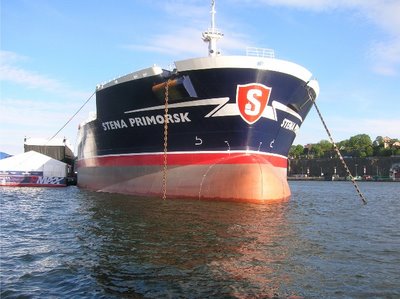 Thanks to her position right smack in the middle of the harbor, I got a pretty good look at her from the little Djurgården ferry on my way to work, charging right under the bow.
Thanks to her position right smack in the middle of the harbor, I got a pretty good look at her from the little Djurgården ferry on my way to work, charging right under the bow. I got a good look at her impressive bow-bulb too. She's floating high because there is no way she would be allowed to weave through the thousands of pristine rocky islets peppering the approaches to Stockholm if she was carrying oil. She's too big to do that safely when loaded.
I got a good look at her impressive bow-bulb too. She's floating high because there is no way she would be allowed to weave through the thousands of pristine rocky islets peppering the approaches to Stockholm if she was carrying oil. She's too big to do that safely when loaded.
The function of the bow-bulb is to lift and begin separating the water in front of the ship. That way, far less water actually breaks on the bow to create a bowwave. What this ultmately means is that the bow-bulb makes the ship far more efficient in slicing through the water, thereby significantly reducing its fuel consumption. Brilliant invention, really. It is a design that has become standard on virtually all big post-war vessels.
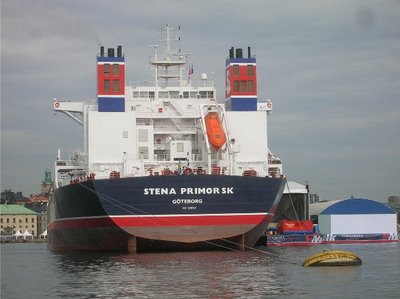 From the ferry I also got a pretty good look at her new lifeboat arrangement, a topic of cosiderable interest since the 1994 sinking of the trans-Baltic ferry Estonia, a disaster that claimed over 900 lives (a sort of second Titanic) and shocked the world into recognition of the need to reconsider lifeboat design.
From the ferry I also got a pretty good look at her new lifeboat arrangement, a topic of cosiderable interest since the 1994 sinking of the trans-Baltic ferry Estonia, a disaster that claimed over 900 lives (a sort of second Titanic) and shocked the world into recognition of the need to reconsider lifeboat design.
The system on Stena Primorsk is the best method found thus far. The crew board the little orange lifeboat from the ship's supersturcture, close the hatch and cut 'er loose. The lifeboat goes shooting down a short track and plunges bow-first into the sea. This 'escape pod' set up is by far the safest method of launching a lifeboat in stormy seas.

Well, that's 'The Shipping News' from Stockholm.


